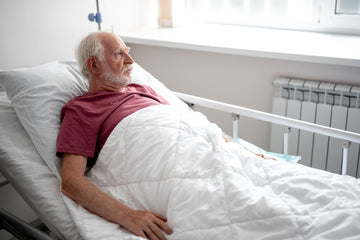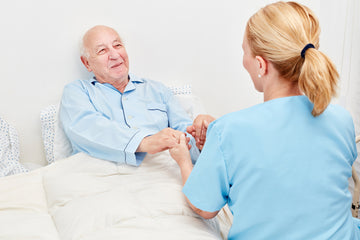
Living with limited mobility shouldn't mean sacrificing your skin's health. If you or a loved one uses a wheelchair, you know that bed sores (also known as pressure ulcers) can be a constant concern. But don't worry, with the right knowledge and preventive measures, you can keep your skin healthy and comfortable.
What Are Bed Sores?
Bed sores or Pressure Sores are injuries to the skin and underlying tissue caused by prolonged pressure on a specific area. For wheelchair users, these sores often develop on the tailbone, hips, or heels. They can be painful, slow to heal, and even lead to serious complications.
Why Are Wheelchair Users at Risk?
- Limited Mobility: The inability to shift weight regularly increases pressure on specific points.
- Friction and Shear: Moving in and out of the wheelchair can create friction, further damaging the skin.
-
Moisture: Sweat, incontinence, or even spilled drinks can create a moist environment, softening the skin and making it more prone to breakdown.

Key Prevention Strategies
- Regular Repositioning: This is the cornerstone of sore prevention. Aim to shift your weight or reposition yourself every 15-30 minutes while sitting in your wheelchair. If you need assistance, ask a caregiver or set reminders.
- Pressure-Relieving Cushions: Invest in a high-quality wheelchair cushion designed to distribute weight evenly and reduce pressure points. Consider options like air, foam, or gel cushions.
- Proper Nutrition and Hydration: A healthy diet rich in protein, vitamins, and minerals promotes skin health and aids in wound healing. Staying hydrated also helps maintain skin elasticity and prevent dryness.
- Skin Checks: Inspect your skin daily for any signs of redness, warmth, or tenderness, especially on bony areas. If you notice anything unusual, address it promptly.
- Keep Skin Clean and Dry: Excess moisture can soften the skin and make it more prone to breakdown. Use a gentle cleanser and pat your skin dry thoroughly after bathing or showering.
- Avoid Friction and Shear: When transferring in and out of your wheelchair, be gentle and avoid dragging or sliding your body. Use a transfer board if necessary.
- Use Protective Products: Apply a bed sore prevention gel like Soreze Bed Sore Prevention Gel to high-risk areas. This can create a protective barrier, reduce friction, and moisturize the skin.
Read Also, Treatment of Bedsores at Home
Soreze Bed Sore Prevention Gel: Your Skin's Best Friend
Soreze Bed Sore Prevention Gel is specially formulated for individuals prone to pressure sores. It contains skin-nourishing ingredients that hydrate, soothe, and protect your skin from the damaging effects of pressure and friction. It's easy to apply, non-greasy, and provides long-lasting protection.

Incorporating Soreze into Your Routine
- Apply Everyday: Spread a thin layer of Soreze onto vulnerable areas like your tailbone, hips, and heels.
- Reapply as needed: Follow the product instructions for frequency of reapplication.
- Combine with other strategies: Use Soreze Bed Sore Prevention Gel in conjunction with the other prevention methods mentioned above for maximum protection.
Remember: Prevention is key! By taking proactive steps and using products like Soreze Bed Sore Prevention Gel, you can minimize your risk of developing sores and enjoy a more comfortable, active life in your wheelchair.
Disclaimer: This blog post is for informational purposes only and should not be considered medical advice. Consult your healthcare professional for personalized recommendations.



